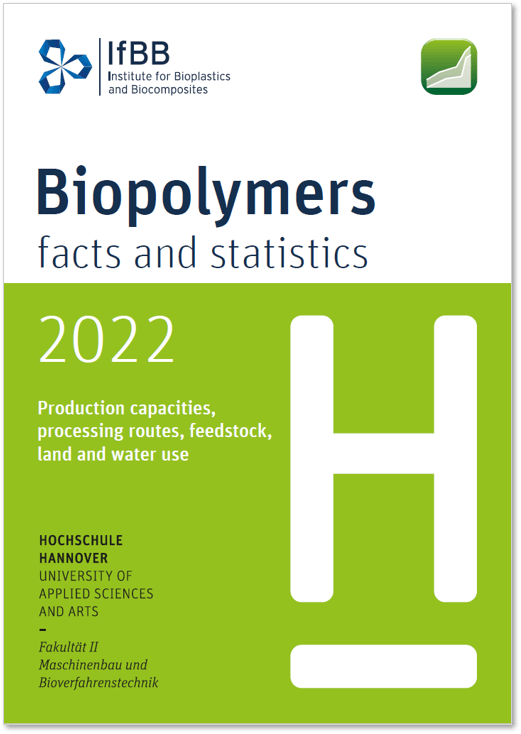The IfBB – Institute for Bioplastics and Biocomposites is a research institute within the Hochschule Hannover, University of Applied Sciences and Arts. The IfBB was established in 2011 after more than a decade of on-going research activities in the field of bioplastics to respond to the growing need for expert knowledge in this area. With its practice-oriented research and its collaboration with industrial partners, the IfBB is able to shore up the market for bioplastics and, in addition, foster unbiased public awareness and understanding of the topic.
As an independent research-led expert institution for bioplastics, the IfBB is willing to share its expertise, research findings and data with any interested party via online and offline publications or at fairs and conferences. In carrying on these efforts, substantial information regarding market trends, processes and resource needs for bioplastics are being presented here in a concise format, in addition to the more detailed and comprehensive publica tion “Engineering Biopolymers” (cf. Endres & Siebert-Raths 2011). If figures or data from this or other publication of IfBB is being used, we kindly ask any person or institution to quote IfBB’s authorship.
One of IfBB’s main concerns is to furnish a more rational basis for discussing bioplastics and use fact-based arguments in the pub lic discourse. Furthermore, “Bio polymers, facts and statistics” aims to easily and quickly provide specific, qualified answers for decision makers in particular from public administration and the industrial sector. Therefore, this publication is made up like a set of rules and standards and largely foregoes textual detail. It offers extensive market-relevant and technical facts presented in graphs and charts, which means that the infor mation is much easier to grasp. The reader can expect comparative market figures for various materials, regions, applications, process routes, agricultural land use or resource consumption, production capacities, geographic distribution, etc.
In recent years, many new types of bioplastics have emerged and innovative polymer materials are pushing into the plastics market. All the same, bioplastics by no means constitute a completely new class of materials but rather one that has been rediscovered from among the large group of plastic materials.
BIOPLASTICS
The first man-made polymer materials were all based on modified natural materials (e.g., casein, gelatine, shellac, celluloid, cellophane, linoleum, rubber, etc.). That means they were bio-based since petrochemical materials were not yet available at that time. Ever since the middle of the 20th century, these early bio-based plastics, with a few exceptions (cellulose and rubber-based materials), have almost been replaced by petrochemical materials.
By now, due to ecological concerns, limited petrochemical resources and sometimes new property profiles, bioplastics have undergone a remarkable revival and are taken more and more into focus by the general public, politics, the industrial sector and in particular the research community.
Of particular interest today are new types of bioplastics, which were developed in the past 30 years. The publication presented here refers to the socalled “New Economy” bioplastics as opposed to “Old Economy” bioplastics which indicate earlier materials developed before petrochemical bioplastics emerged, yet still exist on the market today (e.g., rubber, cellophane, viscose, celluloid, cellulose acetate, linoleum).
“New Economy” bioplastics divide up into two main groups. On the one hand, there are those biopolymers which have a new chemical structure virtually unknown in connection with plastics until a few years ago (e.g. new bio-based polyesters such as PLA), on the other hand socalled “drop-ins”, with the same chemical structure yet bio-based. The most prominent drop-ins at this point are bio-based PET (Bio-PET) and bio- based polyethylene (Bio-PE).
Please refer to https://biopolydat.ifbb-hannover.de for detailed calculations of resource consumption for the production of various bio-based plastics .
The full report can be downloaded directly from IfBB website in the latest edition.

